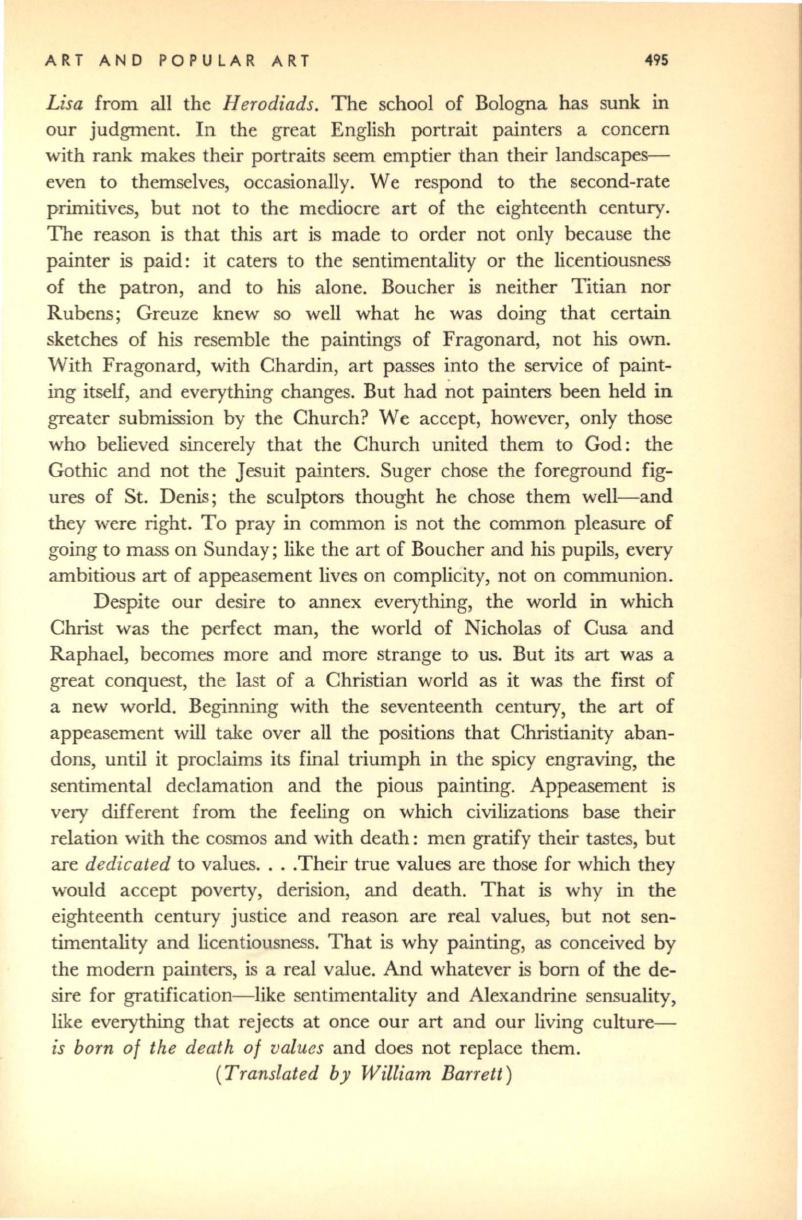
ART AND POPULAR ART
495
Lisa
from all the
Herodiads.
The school of Bologna has sunk in
our judgment. In the great English portrait painters a concern
with rank makes their portraits seem emptier than their landscapes–
even to themselves, occasionally. We respond to the second-rate
primitives, but not to the mediocre art of the eighteenth century.
The reason is that this art is made to order not only because the
painter is paid: it caters to the sentimentality or the licentiousness
of the patron, and to his alone. Boucher is neither Titian nor
Rubens; Greuze knew so well what he was doing that certain
sketches of his resemble the paintings of Fragonard, not his own.
With Fragonard, with Chardin, art passes into the service of paint–
ing itself, and everything changes. But had not painters been held in
greater submission by the Church? We accept, however, only those
who believed sincerely that the Church united them to God: the
Gothic and not the Jesuit painters. Suger chose the foreground fig–
ures of St. Denis; the sculptors thought he chose them well-and
they were right. To pray in common is not the common pleasure of
going to mass on Sunday; like the art of Boucher and his pupils, every
ambitious
art
of appeasement lives on complicity, not on communion.
Despite our desire to annex everything, the world in which
Christ was the perfect man, the world of Nicholas of Cusa and
Raphael, becomes more and more strange to us. But its
art
was a
great conquest, the last of a Christian world as it was the first of
a new world. Beginning with the seventeenth century, the art of
appeasement will take over all the positions that Christianity aban–
dons, until it proclaims its final triumph in the spicy engraving, the
sentimental declamation and the pious painting. Appeasement is
very different from the feeling on which civilizations base their
relation with the cosmos and with death: men gratify their tastes, but
are
dedicated
to values... .Their true values are those for which they
would accept poverty, derision, and death. That is why in the
eighteenth century justice and reason are real values, but not sen–
timentality and licentiousness. That is why painting, as conceived by
the modern painters, is a real value. And whatever is born of the de–
sire for gratification-like sentimentality and Alexandrine sensuality,
like everything that rejects at once our art and our living culture–
is born of the death of values
and does not replace them.
(Translated by William Barrett)


